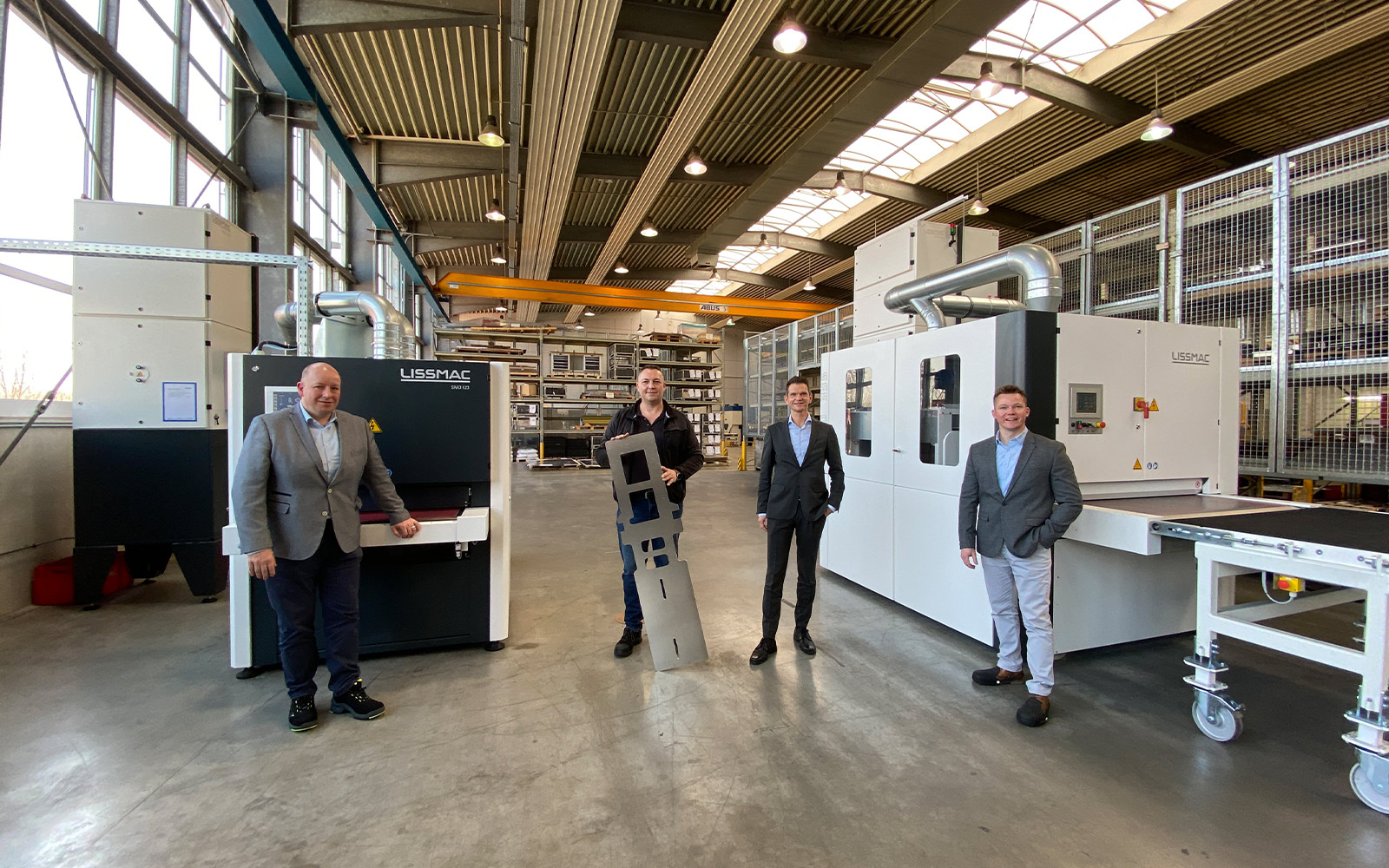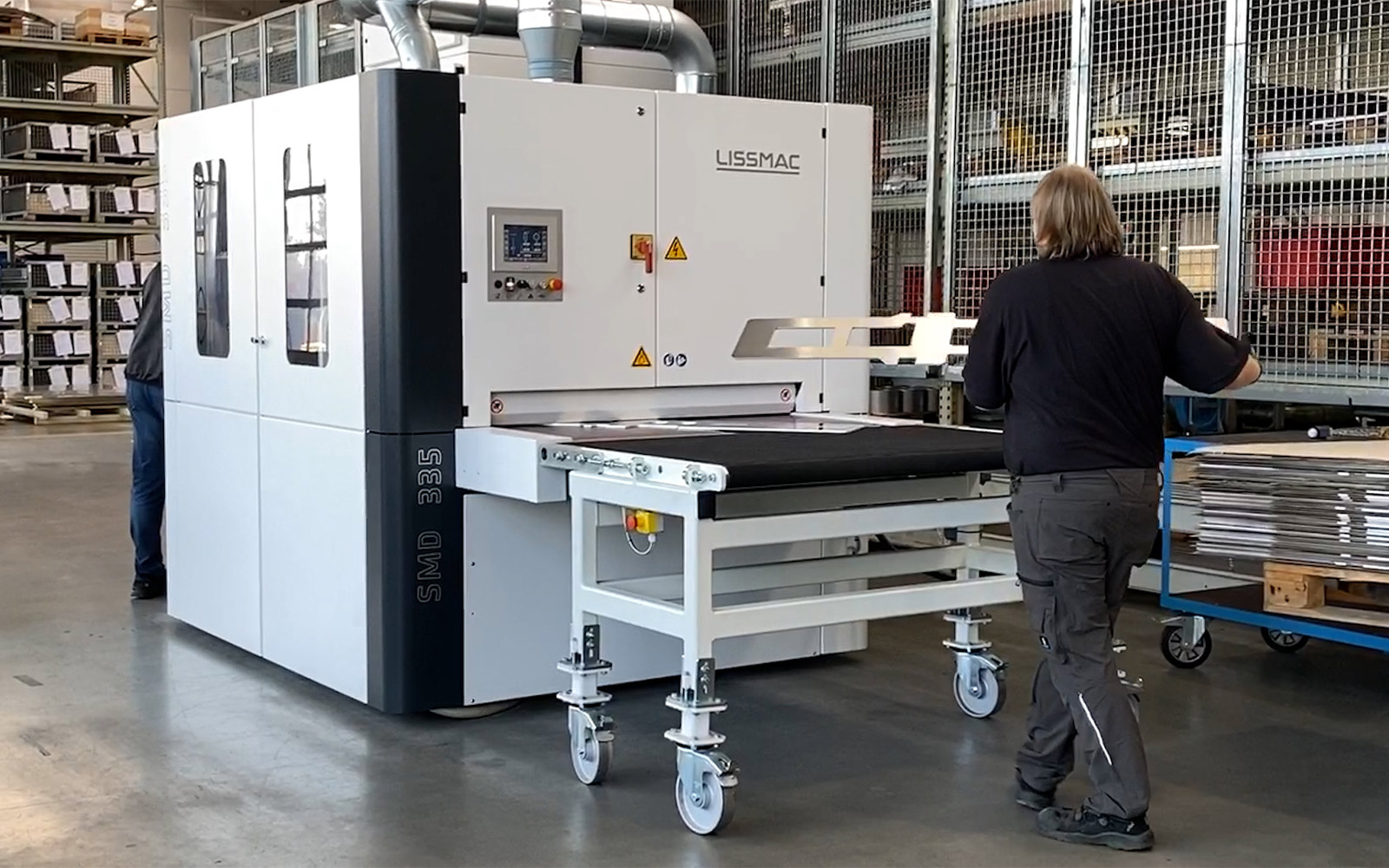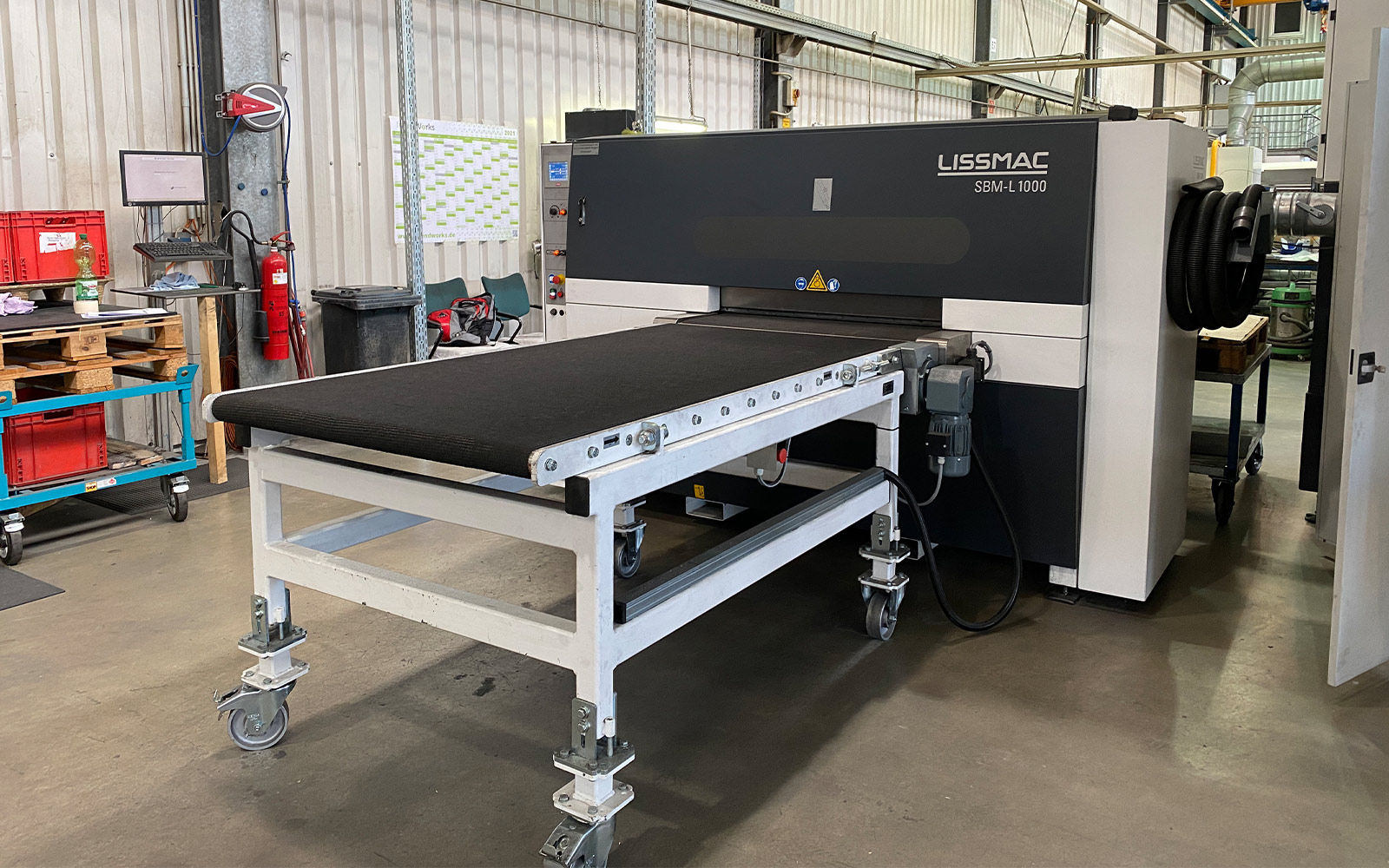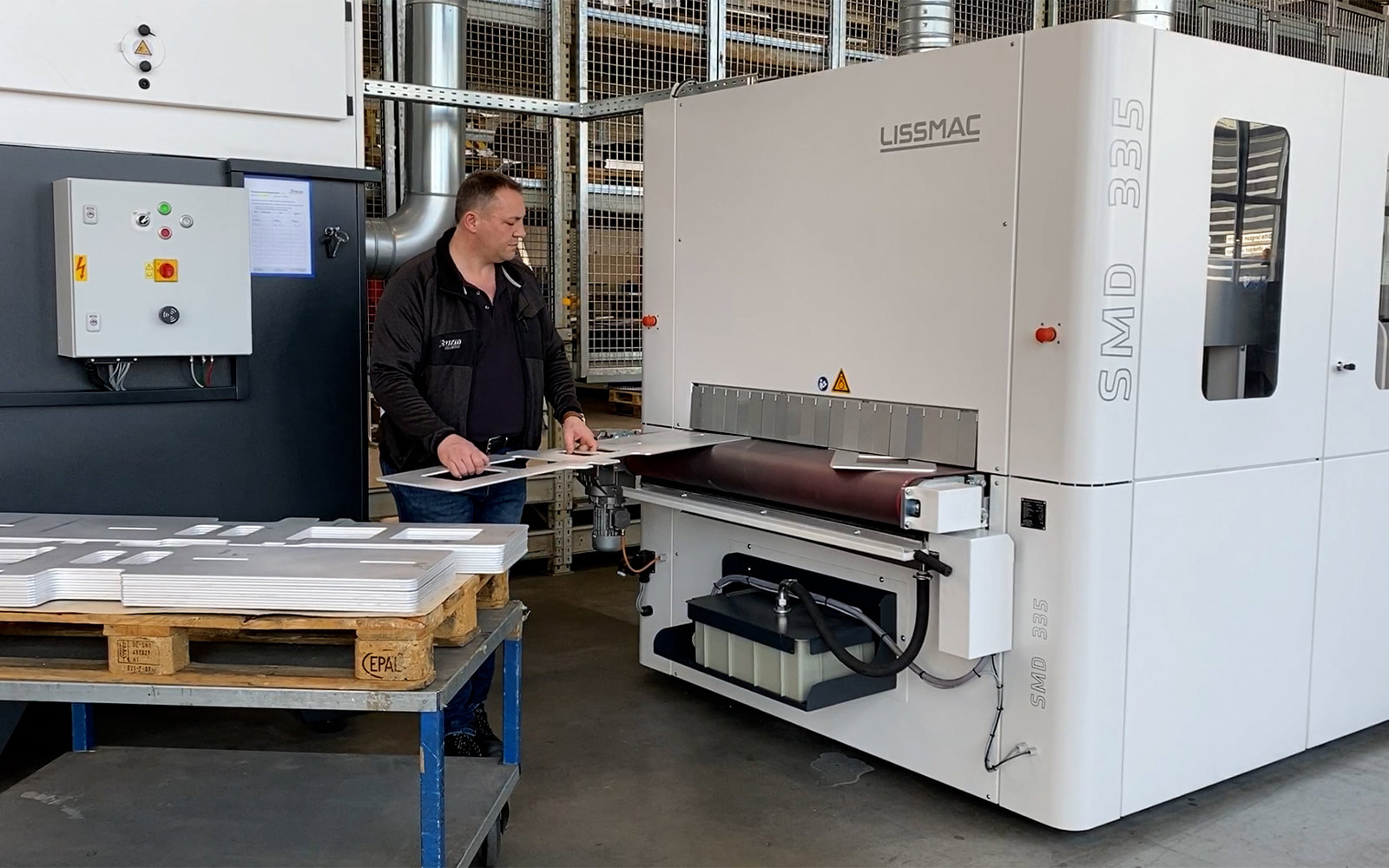



Flexibility and Geometry Independence for Grinding and Deburring
Mei 20, 2021
Restructuring in companies is often associated with new acquisitions. A sheet metal processor from Salching in Lower Bavaria invested in new deburring and grinding technology. And in view of the company's reorientation, a planned new system became a system package of three systems in total. Efficiency and comprehensive flexibility are now guaranteed.
Until March 2019, Sturm Blechverarbeitung was part of the Sturm Group, a globally active company in the fields of automation technology, conveyor technology, surface technology and vision technologies. With an investor entry, Sturm Blechverarbeitung then became independent and an independently operating company as of April 2019. The company had already had a turnover volume of around 30 million euros for several years. Roland Lukas is the commercial managing director of Sturm Blechverarbeitung GmbH. He always looks at the figures in the light of future strategic and technical requirements. "A complex future-oriented investment plan was drawn up with the new investors. A new hall was added to make the complete flow from laser part to assembly efficient. In addition, the product portfolio was to be rounded off and assemblies with assembly were to be increasingly offered. Since then, laser edged parts have been produced additionally. Deburring and straightening are important topics in this context with regard to quality. And automation was another point that was to be improved," he summarises.
With the implementation of various measures, which also included the new acquisition of the plant technology, a growth of 10 to 20 per cent is to be achieved in the course of the reorientation in the next few years and the staff is also to be increased somewhat. Against this background, the first step was to procure replacements for existing, already older deburring machines. In addition, the automation or the new Stopa sheet metal rack storage system at the laser system now achieved a high throughput of parts, which could no longer be handled with manual work and had to be absorbed. What was needed was new and efficient plant technology that could be integrated into these processes. Alexander Luft, head of finishing at Sturm Blechverarbeitung, had the task of defining which system and performance requirements were to be implemented with the new technology in order to meet the increased material throughput and the associated increase in productivity as well as the company's new orientation.
The Wish List for Machine Equipment
"We wanted to become more flexible in machining different geometries and dimensions of the products. The increasing requirements for surface grinding and edge breakage, i.e. injury-free geometries, are also very important as a quality feature for our customers. And last but not least, the employees should be relieved in the machining of small parts," he names some of the requirements.
Accordingly, the starting point was the consideration of the purchase of a new automatic grinding machine for small parts. Since many small parts in cheque card format were still processed in large quantities with hand-guided grinding machines at Sturm Blechverarbeitung, efficiency should have been created here. The decision was made in favour of an SBM-XS from LISSMAC Maschinenbau GmbH, which is suitable for deburring both sides and evenly rounding the edges of stamped, as well as laser- and fine plasma-cut workpieces with dimensions from 25 x 25 x 1 mm up to a maximum of 200 x 200 x 15 mm in just one operation.
During an on-site appointment in Bad Wurzach, Alexander Luft and the technical managing director Reinhold Schultes were able to take a closer look at this system as well as the SMD1 and SMD3 deburring machines. "Basically, we wanted to achieve more independence with regard to the geometry size of the parts to be processed. That's why these two machines were also interesting for us," he adds.
The SMD 335 in particular scored points with the users at Sturm Blechverarbeitung. It is versatile and can be used for deburring, edge rounding, finishing and oxide layer removal as well as for small part processing, regardless of the part geometry. On the Powergrip belt, on which the parts sit during machining, they are fixed by the high adhesive force without magnet or vacuum. In addition, the belt is continuously wet-cleaned so that the operator always has a clean contact surface. Furthermore, the system offers possibilities for automation and integration into a production line.
The dry grinding technology was new for Sturm Blechverarbeitung, as wet grinding had previously been used. "With this system, however, better edge breakage, better surface quality and also a greater throughput can be realised than with the existing machines. The service life of the abrasive is also significantly longer," says Luft, citing some of the advantages.
Of course, finding the right equipment supplier was a challenge in advance. The infrastructure also had to be created. That is: The space had to be available and the supply media had to be connected. And last but not least, it was also important to find the right personnel to operate the equipment. In the search for the equipment supplier, LISSMAC was immediately the company of choice, says Alexander Luft in retrospect.
Convinced With the First Order
Sturm Blechverarbeitung and LISSMAC completed their first joint order in spring 2019. And it was a tough one, because it included some very important and quite critical parts that were to be machined with a planned new system. Therefore, in advance and with a view to current orders, it was important to select the relevant parts for the test machining: from thin sheet to thick sheet, from pointed to round as well as different materials.
"We manufacture the parts, which are of a very high quality, for an important B2B project. The efficiency should be increased in any case. And the customer expects 100 per cent performance here, i.e. no complaints. A photo-optical recognition system developed in-house helps to implement the high level of quality and process required," says Luft, summarising the requirements.
Alexander Bochtler, area sales manager at LISSMAC, recalls: "The component in question was originally processed in four to sometimes five steps. The stainless steel part was to be machined on a new system with high quality and at a lower cost. The burr should be removed as evenly as possible in one pass and the edge should also not only be slightly broken, but properly rounded to eliminate the risk of injury during subsequent assembly." With a view to the look and feel, but also to further processing, these key points are important because, for example, when folding, the punch and die are protected in this way.
Alexander Bochtler, who knows his company's machines and the work results that can be achieved with them, agreed to reduce the machining process to just one pass after inspecting the parts. The initial scepticism of the customer Sturm was noticeable, but then quickly dispelled, because the test machining of the critical components was convincing.
The delivery of the SBM-L, a system for deburring and edge rounding of workpieces up to 50 mm thickness, marked the beginning of a reliable partnership. The dry processing system for simultaneous processing of the inner and outer contours saves cost-intensive turning of the workpieces or repeated processing of the parts. The new technology was delivered and put into operation in October 2019. The first order, the machining of critical stainless steel parts, was completed without any problems. "The be-all and end-all in such a cooperation is that the promised results are also kept," Alexander Luft sums it up.
Powergrip Technology Enables High Flexibility for Machining
With this good start, the machine manufacturer from Bad Wurzach was then also back on board with the topic of small parts machining. But in addition to the purchase of the SBM-XS with 300 mm working width, other applications and the new Powergrip technology from LISSMAC also came into focus.
"Basically, the processing machines are always designed for a certain component size. With the Powergrip technology, however, smaller parts can also be machined on machines with large working widths. This means that a wider range of products can be covered and more flexibility in machining is possible," explains Alexander Bochtler.
And so Sturm Blechverarbeitung additionally decided to purchase an SMD 123 RE, a grinding and deburring machine with a 950 mm working width. "Without question: The purchase of the SBM-XS and the SMD 123 RE was very important. But with regard to the working width, we were still limited," says Luft. And so another machine was invested in: the SMD 335 REE with a working width of 1350 mm. "We cover a very large parts spectrum from about 90,000 active items in quantities from one to several thousand. Flexibility is therefore very important for us to be able to survive in the market," he says, explaining the complex investment decision.
With around 200 employees, Sturm Blechverarbeitung operates as a classic contract manufacturer with regard to all kinds of sheet metal solutions. The company processes 70 per cent stainless steel as well as structural steel and aluminium. Customers include well-known manufacturers from the food industry and medical technology, but also smaller companies.
Much More Than Just a Machine Purchase
One thing is certain: The investment in the system package has paid off for the sheet metal processor from Salching, not only in terms of efficiency, flexibility and quality. "The systems are very good in terms of ergonomics, noise emission and accessibility. Our employees also identify well with the new technology," says Luft.
Luft and Bochtler also agree that the customised training for the operators was very good and important. Furthermore, the procurement of spare parts and abrasives by LISSMAC is very well organised and allows Sturm to plan for sustainable maintenance. And last but not least, Sturm is very satisfied with the uncomplicated after-sales service that goes without saying. All in all, a cooperation that goes far beyond the actual machine delivery.
Text: Annedore Bose-Munde, Fachjournalistin für Technik und Wirtschaft www.bose-munde.de